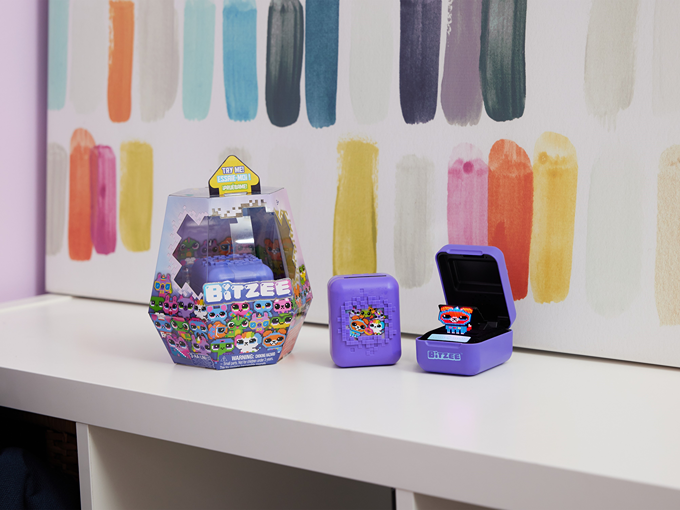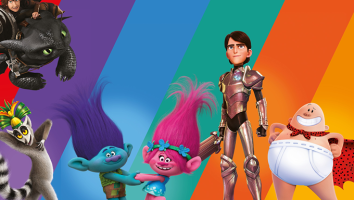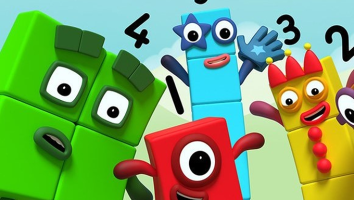By: Gary Rusak
Almost 25 million US households adopted a pet during the pandemic. And now, the pet industry in the US alone is generating an estimated US$280 billion every year. Like a rambunctious puppy, this growth is showing no signs of slowing down.
So it follows that toycos are introducing a pack of new digital pet offerings in the belief that the pandemic has reignited interest in this play category. “We have seen a resurgence in the last couple of years,” says Tara Badie, marketing director for Bandai Namco, makers of the iconic digital pet Tamagotchi. “At the end of the pandemic, we all wanted to nurture and take care of things, and I think this is a good way of doing it.”
Susan Cummings, CEO and co-founder of Petaverse—the company behind a new fully digital entry in the category—also sees a connection between COVID-19 lockdowns and the rise of interest in all things pet related. “We were all trapped in our houses,” she says. “I think that is at least some sort of impetus [as to] why these products are coming back.”
Doug Wadleigh, head of global toy brands at Spin Master, also cites the after-effects of the pandemic as a factor in the growing popularity of the nurturing play pattern. “I think it probably made people more empathetic,” he says. But he also sees another factor at play: “There is a lot of nostalgia for parents who want their kids to experience the same things they did when they were the same age.”
Entries into the digital and electronic pets marketplace are legion, with some of the biggest toycos getting in on the action. Spin Master is making a splash with the North American release of its handheld digital pet Bitzee this fall. At the same time, Hasbro is re-introducing its iconic Furby talking pet.
Longtime category stalwart Tamagotchi launched its newest iteration this summer, while its longtime rival GigaPets is riding the same wave with new innovations and a focus on online and alternative retail channels. And the newest pet on the block is Petaverse’s tech-savvy virtual pet, which takes a multi-platform approach to the digital space while leveraging NFT, AR and VR technology. A battle royale is shaping up in the toy sector.
Bitzee
Spin Master’s Bitzee (pictured right), which has started rolling out and will reach full retail distribution this fall, uses high-rate LED lights to create a hologram-like image of a pet. The proprietary technology sets the product apart from other handheld units that use a more traditional digital display.
“We [take] the pet out from behind the screen and make you feel like it’s right there in front of you,” says Wadleigh. “It is brought to life in a way that an interactive pet has never been brought to life before.”
Each of the 15 Bitzee SKUs in the toyco’s AAA battery-powered line will retail for US$29.99. Users can poke and prod the digital pet projections with their fingers to coax a number of tricks and responses from them. And while Bitzee uses specialized technology, the aesthetic itself is fairly lo-fi—a key characteristic of the category, as demonstrated in the 8-bit displays of Tamagotchi and GigaPets, says Wadleigh.
“I was interested to see whether today’s kids—who have grown up with such amazing 3D computer-generated graphical design work—would react to an 8-bit design style,” says Wadleigh. “In fact, they loved it. They loved how they could interact with it.”
Furby
Continuing its traditional doll-focused approach to the category, Hasbro relaunched Furby in July to celebrate the brand’s 25th anniversary. The redesigned version “offers kids a middle ground between traditional toys and on-screen entertainment,” says Kristin McKay, VP and GM of Hasbro Fashion & Preschool. “This generation has a little bit of a new shape, a new fur-hawk, and the eyes have reverted back to the mechanical actions of the original.”
Retailing for US$69.99, Furby continues the classic play pattern it pioneered, using a unique language called Furbish to communicate. The toy leverages traditional doll play that is augmented through the interactive speech component, separating it from handheld or virtual competitors. This formula has proven to be successful over the last quarter-century—more than 58 million units have shipped since Furby’s initial launch in 1998.

Tamagotchi
During the late ’90s, the first wave of digital pets and the handheld electronics that housed them migrated from Japan to North America and the rest of the world. Tamagotchi, with its 8-bit display, was soon ubiquitous, and 90 million units have sold worldwide to date—including successful relaunches in 2014/2015 and 2019.
Bandai recently released its newest version, Uni. This revamped Tamagotchi retails for US$59.99 and is built around the same basic play patterns (feeding, bathing, obligatory bathroom shenanigans). But it also now boasts a color screen; rechargeable batteries; games and Easter eggs that constantly update; wearability; and access to see other Tamagotchis in 34 different countries through the newly unveiled Tamaverse. When that play mode is selected, the Tamagotchi itself will put on a VR headset to enter the new environment. There’s even a “Tama travel” option to explore exotic locations and collect souvenirs.
“[For the first time], you can also compete in mini-games with characters in different parts of the world,” says Bandai’s Badie. But for safety reasons, the unit does not connect to the internet, she adds.
GigaPets
Not to be outdone, Tamagotchi’s longstanding competitor GigaPets has timed another one of its relaunches to capitalize on the growth in the category in general—and the reintroduction of Tamagotchi, in particular. The 8-bit handheld device (pictured above), which retails for around US$17.99, includes a suite of new games and fresh tricks. Six pets are currently available at American casual dining chain Cracker Barrel Old Country Store and smaller independent toy stores, as well as online through Amazon.
“The content of GigaPets is quite different from Tamagotchi,” explains Steve Rehkemper, president of Top Secret Toys. “The foundational activities of feeding, cleaning and taking it to the doctor are still there. But we have tried to introduce humor and pop culture into it. For example, if you take your dinosaur to the doctor, it will eat him!”
Petaverse
London-based Petaverse is taking a different approach to the digital and virtual pet market, with a tech-heavy offering that will be able to traverse multiple platforms.
Leveraging decades of game development experience, Petaverse creates pets (pictured above) that “break the confines of just being trapped in one experience or one game,” says Susan Cummings, the company’s CEO and co-founder. Launching this fall, users can go to petaverse.com and design a digital NFT avatar pet free of charge to be their digital companion in a bevy of mini-games.
“The mini-games are how you fulfill the needs of your pets, but you can also bring that same digital pet to AR or phones or VR glasses,” says Cummings. “You can put them on your Twitch stream and beyond.” (In fact, as Cummings was explaining the product during our interview over Zoom, her pet avatar—a grey and surprisingly life-like digital cat—wandered onto the screen behind her, proffering distinctly feline half-curious looks from the background.)
Petaverse will be built around a subscription revenue model, in which users will pay for each extension for their NFT companion. A slew of partnerships are currently in the works, including collaborations with Apple’s Vision Pro platform and Qualcomm’s Snapdragon AR platform.
Cummings sees endless possibilities for virtual pets. “Imagine a future where the whole family is wearing digital glasses…your pet is off playing with your kids in the other room, and then it will come and tell you when it’s hungry.”
The technology is already in place that will entirely transform the robust pet industry, she adds. “It will be seamless, and that is what we want. We are really looking to blur that line.”
This story originally appeared in Kidscreen‘s October/November 2023 magazine.



























